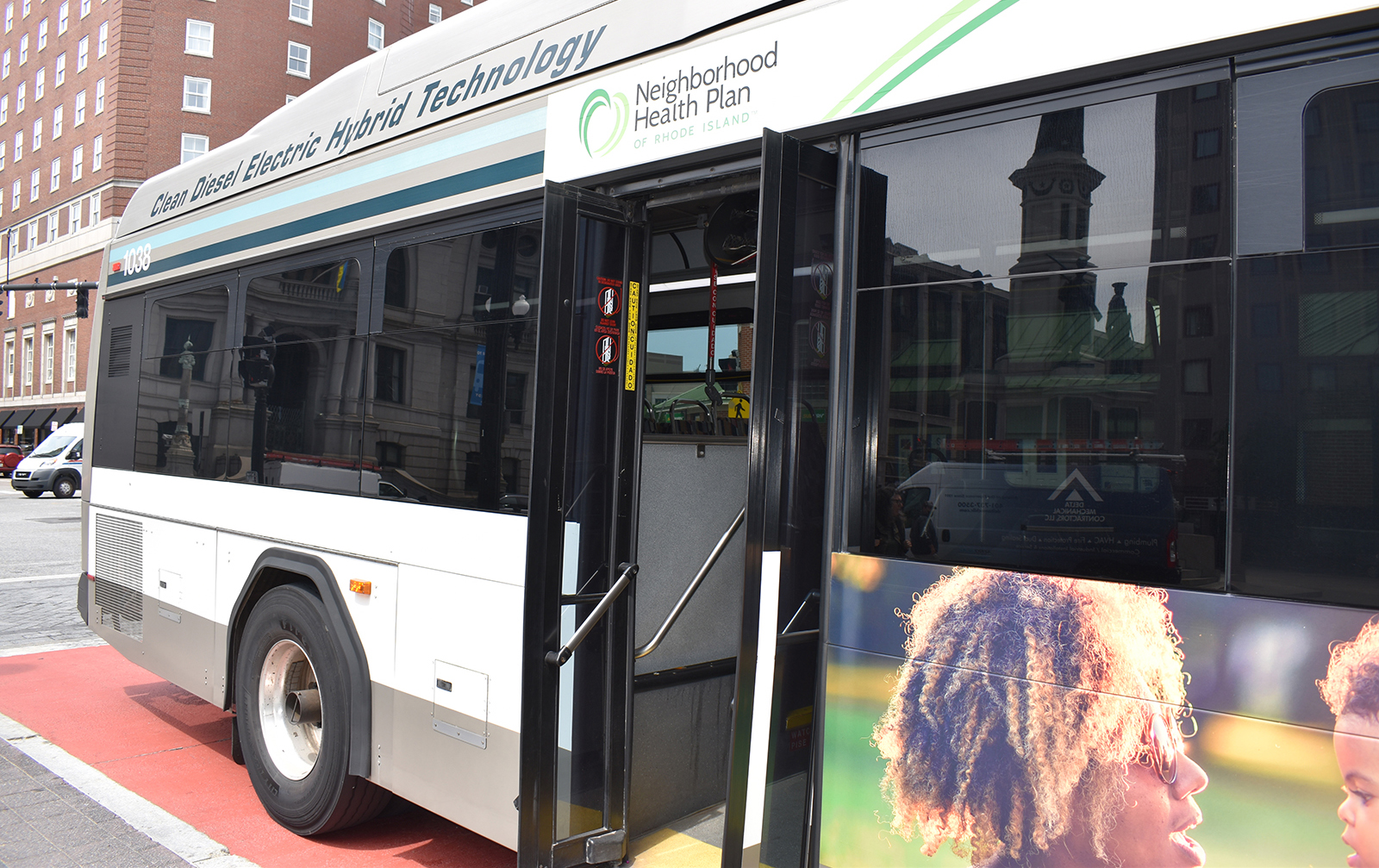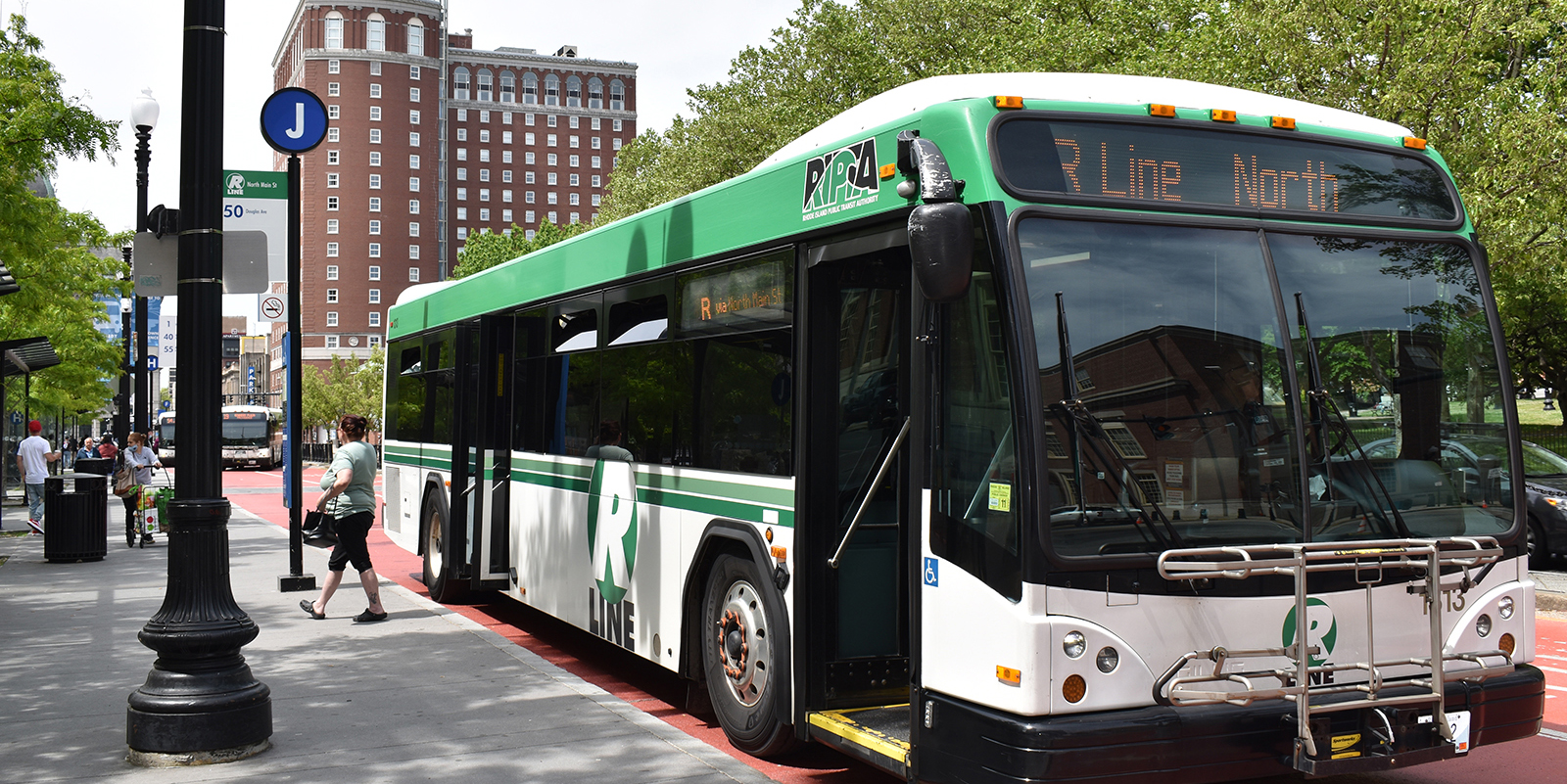Car Culture Drives Unsustainable Movement
February 2, 2010
PROVIDENCE — During the past five years, as the cost of fuel has risen, unemployment skyrocketed and concerns about greenhouse gases grown, Rhode Island Public Transit Authority ridership has increased 35 percent.
In that time, little has been done to help RIPTA add more buses and routes. In fact, the Gov. Carcieri administration and the General Assembly have done just enough to allow the already-underfunded agency to barely maintain its current services. Talk of expansion is left to others who actually ride RIPTA buses and recognize that the well-managed agency still can’t get many people where they need to go.
In Rhode Island, 9.25 cents per gallon of gas sold goes to RIPTA, which provides the agency with one of its largest sources of funding. But when fuel prices increase and ridership swells, a key part of RIPTA’s revenue decreases, just when the public needs more bus service.
The agency’s financial struggles, therefore, are worsened by the fact that as motorists drive less, RIPTA’s main source of local support, the aforementioned gas tax, decreases.
It’s easy to recognize that Rhode Island’s funding scheme for public transportation is designed to fail, and that the country’s automobile system is not a sustainable mode of transportation. Yet, because of relentless advertising, the fear of change and lobbied-up lawmakers afraid to actually make a difference, an energy-sucking, money-grabbing, greenhouse-gas emitting car culture continues to rule America’s roadways.
“There are forces fighting to keep us in our cars,” said Catherine Lutz, a professor of anthropology at Brown University who has been studying the U.S. car system’s financial, social and health impacts. “We really need to understand the car system in order to change it.”
In the book “Carjacked: The Culture of the Automobile and its Effects on Our Lives” Lutz wrote with her sister Anne Lutz Fernandez, the authors detail the complex impact of the automobile on modern society and outline how to develop a healthier, cheaper and greener relationship with cars.
“We need to get people out of their cars,” Lutz said, “but the power of car advertising and the political rhetoric that comes out of Washington keeps us hostage to a car culture.”
The nation’s roadways were hijacked in the 1920s when General Motors, Firestone Tire, Standard Oil, Phillips Petroleum and others conspired to dismantle the U.S. streetcar system.
When the crusade to destroy the country’s popular rail-based public transit system began, only one in 10 Americans owned a car. In 2007, Americans spent nearly 500,000 years — or about 4 billion hours — stuck in traffic, according to the book by the Lutz sisters.
The financial cost of all this stop-and-go traffic they determined was $87.2 billion in wasted fuel and lost productivity, or $750 per traveler.
Lutz was joined last week at the Apeiron Institute for Sustainable Living, on Gordon Avenue, by John Flaherty, the co-chairman of the Rhode Island Coalition for Transportation Choices, and Mark Therrien, RIPTA’s assistant general manager for transit development, for a panel discussion about transportation in the Ocean State.
The three speakers agreed that Rhode Island needs to expand its transit system and build more walkable and bikeable communities. To do that, important, and sometimes-difficult, decisions will need to be made and money secured.
There is federal money available for transit projects, but those funds typically require matching state dollars. That’s a problem in Rhode Island, since “we don’t put money aside for those kinds of projects,” Flaherty said.
While eight decades in the fast lane has taken its toll on the environment and on local economies, the adjustments required to change the way Rhode Islanders and the rest of the country move around are slow to gain traction.
There are plenty of reasons why, according to the featured speakers.
Society doesn’t realize how expensive — financially and otherwise — this runaway car culture really is. Here are several facts the panelists mentioned during their presentation that backup the claim:
• 40,000 people die a year in car-related accidents. It’s the leading cause of death for people between the ages of 1 and 34, according to Lutz.
• 2.5 million people are injured in car crashes every year. “The most significant risk we take everyday is getting into our cars,” she said. “People just don’t realize how unsafe it is to travel by car.”
• It costs the average American family $14,000 per year to own and operate two cars. In fact, for every dollar earned, the average U.S. household spends 18 cents on transportation, 98 percent of which goes toward buying, maintaining and operating vehicles, according to the American Public Transportation Association. It’s the largest source of personal debt after home mortgages.
• The average cost of a new car is $26,000.
• The average American spends 18.5 hours a week in his or her car.
• Since the mid-1960s, about 2,000 miles of road have been built in Rhode Island, and now four decades later, the state and local municipalities can’t afford to keep roads and bridges in good repair. “You can’t take a truck over the Pawtucket River on Route ninety-five,” Flaherty said. “That’s Route ninety-five.”
• This country’s car culture widens the gap between the rich and poor.
Many local, state and federal officials are slow to grasp, or just ignore, how unsustainable a car-dependent society is and the culture of sprawl it helped create. “We can’t continue to sprawl out and work off the same set of incentives that we have been for the past 50-plus years,” Flaherty said. “The bill for 50 years of sprawl is coming due.”
• To serve individuals with disabilities who are unable to use regular bus service, RIPTA provides the RIde program. Unfortunately, federal law obstructs just how effective the program could be. “Our RIde vehicles often are running around with one passenger in it,” Therrien said.
• “Everything designed and built in the last 50 years at the street level was done with cars in mind,” Flaherty said. As an example, he noted the rounded corner of curbs at many pedestrian-heavy intersections, which allow cars to make right turns faster but do little for public safety. A woman in the audience said, “we treat bike paths and bicyclists like recreation and not as a form of transportation.”
• Local planning boards approve roads with no sidewalks or have ones that go nowhere built, ignoring the fact that these roadways also are used by walkers, joggers and bicyclers. One of the reasons for that, Therrien said, is that most of these local boards are made up of developers, builders and lawyers.
Carmakers continue to push an unyielding advertising campaign that associates a new car with progress, family, freedom, individualism and the environment. “If you love your family, buy them a car, they tell you,” Lutz said. “They tell you it’s like getting a whole new family room.”
• A recent TV ad for a Chrysler Town & Country minivan referrers to the vehicle as a “playground on four wheels.”
• Fossil-fuel-chugging behemoths with names like Toyota Sequoia, Chevy Tahoe, Toyota Tundra and GMC Yukon are shown scaling the sides of mountains, cruising along frozen Artic expanses and plowing through lush-green jungles.
New England’s transportation system is the region’s No. 1 source of carbon dioxide, according to the Sierra Club. In 2001, for example, the six states’ transportation sector emitted more carbon dioxide than the entire economies of Austria, Portugal and Israel.
In fact, transportation consumes 43 percent of America’s overall energy resources and is responsible for nearly a third of U.S. carbon dioxide emissions. There are nearly 120,000 gas stations in the United States, including close to 400 in Rhode Island, feeding an unsustainable car culture.
To build streetcar infrastructure, extend commuter rail lines, add more RIPTA buses and routes and create more pedestrian- and bicycle-friendly communities will require an organized and vocal movement, which is why the Coalition for Transportation Choices was created last year.
The partnership consists of about two dozen public advocacy groups representing economic, social and environmental issues. The coalition is working with state agencies, municipalities, lawmakers, civic organizations, the business community and the public to promote visibility, support and action to help improve Rhode Island’s transit system.
“We’ve spent 50 years educating people we can’t live without cars,” Flaherty said. “It will require work to change the system. We need to build the public and political will. Decision makers need to hear it more before they will stick their necks out. We need to build a movement.”
Categories
Join the Discussion
View CommentsYour support keeps our reporters on the environmental beat.
Reader support is at the core of our nonprofit news model. Together, we can keep the environment in the headlines.
We use cookies to improve your experience and deliver personalized content. View Cookie Settings



